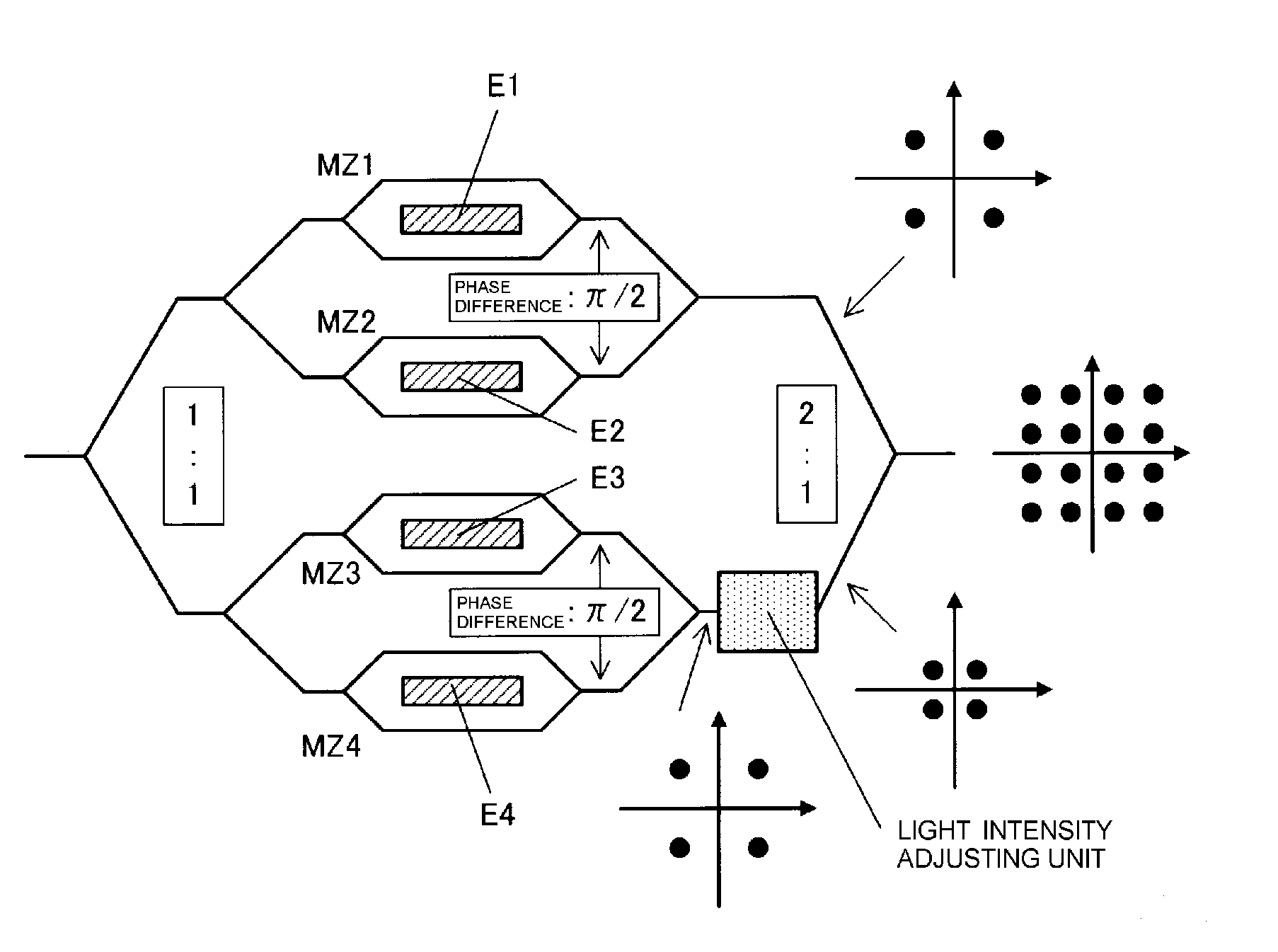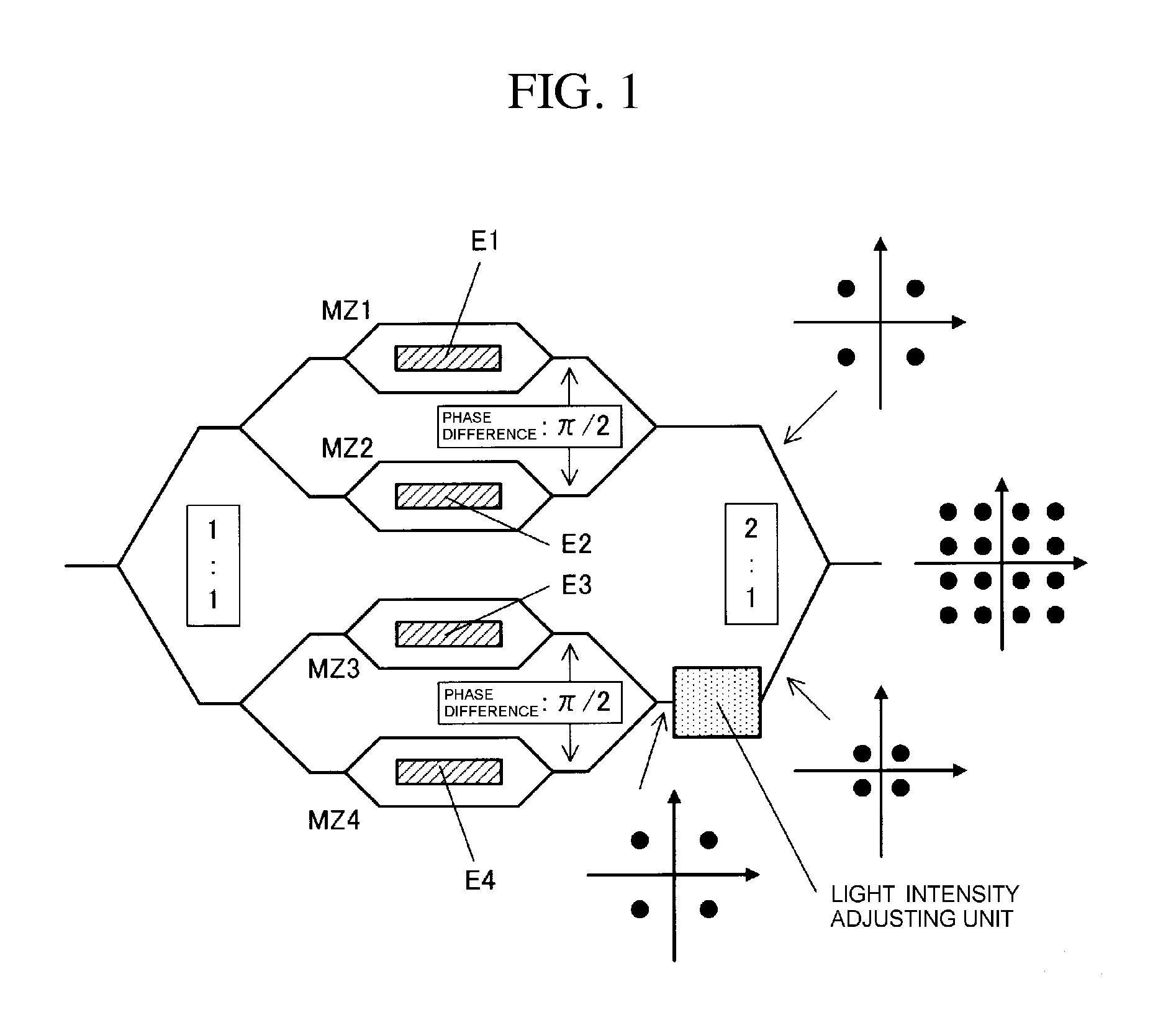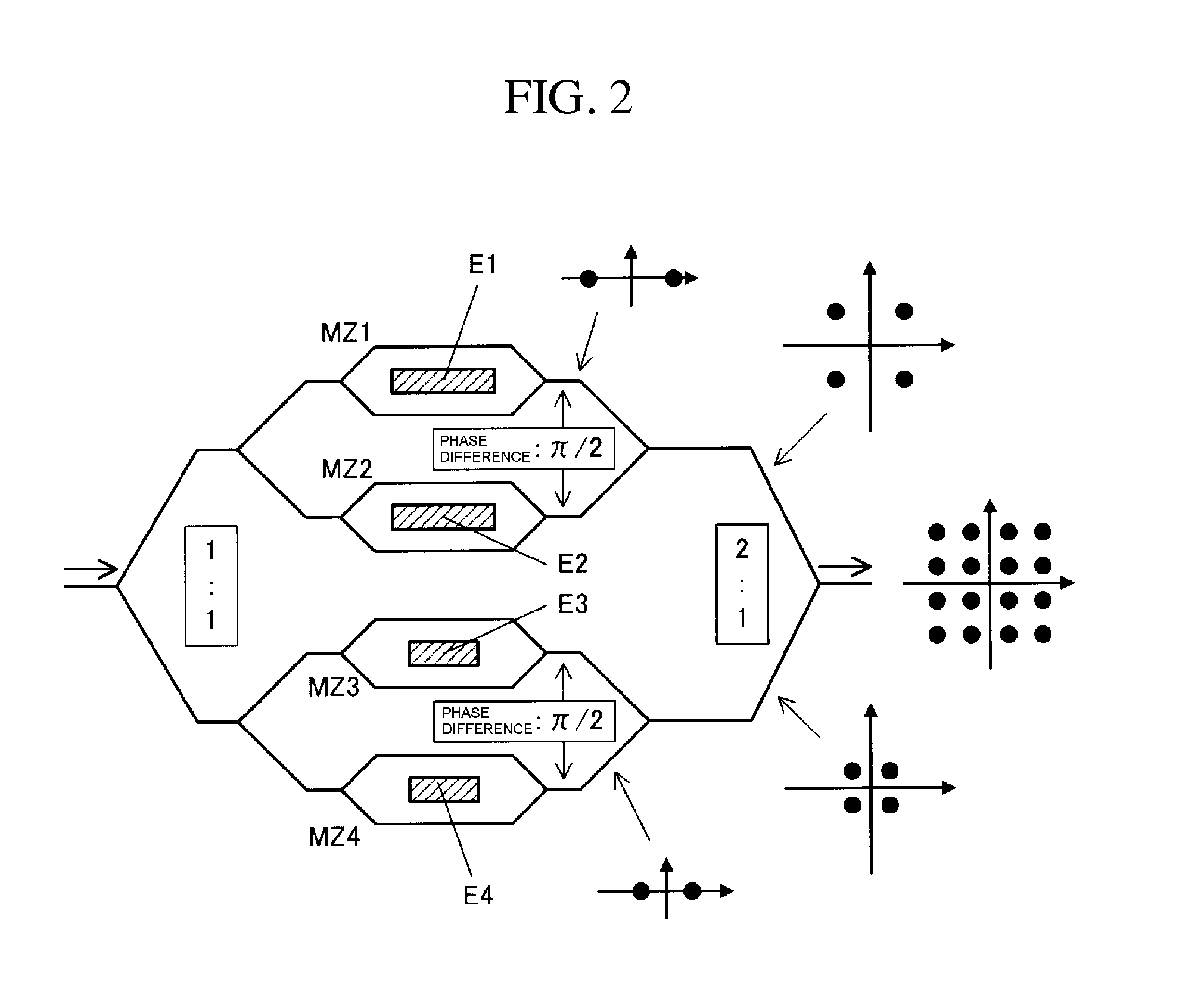Optical modulator
a technology of optical modulator and light intensity ratio, which is applied in the field of optical modulator, can solve the problems of weak resistance to bias drift, increase in the size of the entire element, and easy influence of means, and achieve the effect of easy adjustment of light intensity ratio in optical modulator, stable yield and miniaturization or integration of elements
- Summary
- Abstract
- Description
- Claims
- Application Information
AI Technical Summary
Benefits of technology
Problems solved by technology
Method used
Image
Examples
Embodiment Construction
[0051]Hereinafter, an optical modulator of the present invention will be described in detail. As shown in FIG. 2, the optical modulator of the present invention includes optical modulation units having Mach-Zehnder type optical waveguides (MZ1 to MZ4) and modulation electrodes (E1 to E4) for modulating light waves propagating through the Mach-Zehnder type optical waveguides. In the optical modulator, a plurality of optical modulation units are disposed in parallel on the same substrate, and one input waveguide branches off to be connected to the Mach-Zehnder type optical waveguide of each optical modulation unit and the entire optical waveguide is formed such that outputs from the Mach-Zehnder type optical waveguides are combined and output through one output waveguide. A modulation signal with the same intensity is applied to the modulation electrode of each optical modulation unit. In at least some optical modulation units, mechanical structures including the modulation electrodes...
PUM
 Login to View More
Login to View More Abstract
Description
Claims
Application Information
 Login to View More
Login to View More - R&D
- Intellectual Property
- Life Sciences
- Materials
- Tech Scout
- Unparalleled Data Quality
- Higher Quality Content
- 60% Fewer Hallucinations
Browse by: Latest US Patents, China's latest patents, Technical Efficacy Thesaurus, Application Domain, Technology Topic, Popular Technical Reports.
© 2025 PatSnap. All rights reserved.Legal|Privacy policy|Modern Slavery Act Transparency Statement|Sitemap|About US| Contact US: help@patsnap.com



